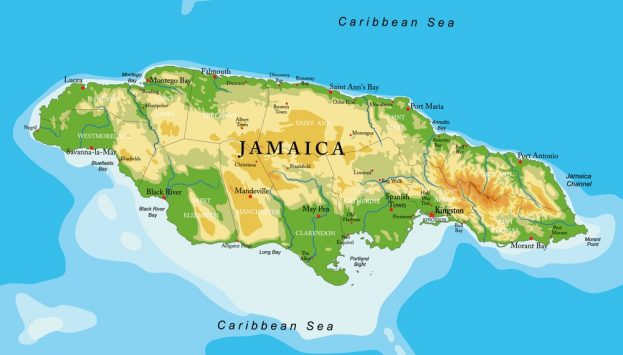
I read with consternation the Finance Minister’s rebuttal to the Opposition’s rebuttal to the Minister’s rebuttal in Parliament about Mark Golding’s $34 billion-error or $34-billion misrepresentation. I also read The Gleaner article “Clarify fiscal numbers”. I must agree that budget debates must be “based on credible and consistent data”. That is what budget credibility is all about, in a nutshell. The Opposition Leader spoke. The Minister rebutted. The Opposition Spokesman on Finance released a rebuttal. The Minister rebutted. Is this about who has the last word?
Readers, are you any clearer on what the problem is, or the divergence that has permeated the issue? Most persons might not have read PwC’s budget review in which the tabled tax revenue figures for fiscal year 2021/22 were juxtaposed with the tabled tax revenue figures for fiscal year 2022/23. That review was dated March 8, 2022 and had the following on page 3: “Tax revenues are projected to be JMD 671.5 billion for 2022/23 (compared to an estimate for 2021/22 of JMD 572.4 billion)”. This document was online until at least March 22, 2022. See the attached picture of page 3 up to March 22, 2022.

Since the confusion, the same link gives an updated document with the same date of March 8, 2022. There is no note, that I see, indicating that this is an amendment. On page 3, in this version of the Budget review, the review states: “Tax revenues are projected to be JMD 671.5 billion for 2022/23 (2021/22 Budget Estimate: Original – JMD 572.4 billion / 3rd Supplementary – JMD606.2 billion)”.
On page 5, in a previous version, the $99 billion in additional tax revenues was disaggregated. See picture below. As you can see, there was no second column with estimated tax revenue from the 3rd Supplementary.


Similarly, the new page 5 now has the tax revenue to be raised when tabled estimates for FY 2021/22 are compared with tabled estimates for FY 2022/23. There are footnotes explaining that ETR is Estimated Tax Revenues. Instead of increase in Tax Revenue, the narrative to the right, of the figures now says “Increase in Estimated Tax Revenue”. I guess there is a positive from this. There is a learning curve that all have moved up.
In retrospect though, PwC was not initially wrong as it was clear on what it was comparing. It previously compared tabled tax revenue estimates (FY 2021/22) to tabled tax revenue estimates (FTY 2022/23). There is no paper trail to connect the previous version to the current version. I would see nothing wrong with that because it would just be inclusion of additional information and comparisons.
PwC, I really don’t like what was done. I am an avid reader of the budget review analysis. How do you think someone who monitors PFM data feels about this – to have seen a previous version and now a new version with the same date without any indication on the front page that it is a revision or amendment?
This leads me to the point that I actually want to make. Do you know what all this recent performance in the theatre called the budget debate boils down to? It can simply be reduced to what is being compared with what. If the tabled estimates for FY 2021/22 are compared to the tabled estimates for FY 2022/23, there is a $99 billion increase.
The $606 billion the Minister used to arrive at a $65 billion increase is what is projected to be tax revenue by March 31, 2022. The Minister compared 3rd supplementary revised tax revenue estimates for FY 2021/22 with tabled tax revenue estimates for FY 2022/23. He is comparing what he expects at the end of FY 2021/22 to what he has tabled as projected tax revenue for FY 2022/23. Golding compared tabled tax revenue estimates for FY 2021/22 with tabled tax revenue estimates for FY 2022/23 to arrive at the $99 billion figure, just as PwC did initially.
Looking at it another way, it reinforces what the Opposition Spokesman on Finance said, that the Government has benefitted from the increases that fed into tax revenues. $606 billion (what is expected at end FY 2021/22) minus $572 billion (what was projected in the tabled estimates for FY 2021/22) = $34 billion more in tax revenues than what was originally estimated. Some might say this is about budget credibility. The question is how much uncertainty can be planned into the budget? Inflation is one factor that can increase estimated tax revenues.
Now, if you add the $34 billion to the $65 billion, you get $99 billion. It is simple math, not rocket science. So the increase of $65 billion is relative to what is expected to be collected by the end of FY 2021/22. We do not know what the actual numbers will be. If you look at each Estimate of Revenue and Expenditure for central government (that big yellow book), you will see that Actual numbers have a lag of two years. In the fiscal year 2022/23 estimates, you will see Actuals for fiscal year 2020/21. Similarly, the Actuals for fiscal year 2022/23 will be published in the Estimates for fiscal year 2024/25.
So, what is the comparison? Oranges and oranges or oranges and apples? If the tabled estimates are oranges, then the revised estimates published in the third supplementary are apples. Golding and PwC originally compared oranges with oranges. The Minister compared oranges with apples. In his defence, he cannot know now what the final revised estimates in 2023 will be so he has no choice but to compare oranges and apples. What is needed, however, is a clear explanation of what is being compared with what and why?
As I said, it is a learning moment for everyone but it is not an exercise that requires further theatre. Everyone should be much clearer now. So, there is no wrong and right here. When the debate for FY 2023/24 begins, we will see if the collected and estimated tax revenue estimates for FY 2022/23 will be greater than or equal to $65 billion. Given oil prices and other inflationary pressures, what say you, readers? Will it be $65 billion or more than $65 billion? The jury’s out.



